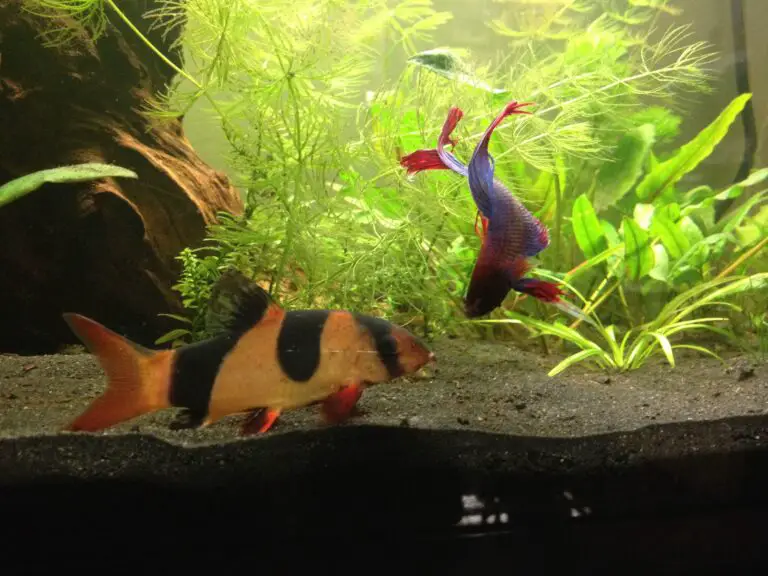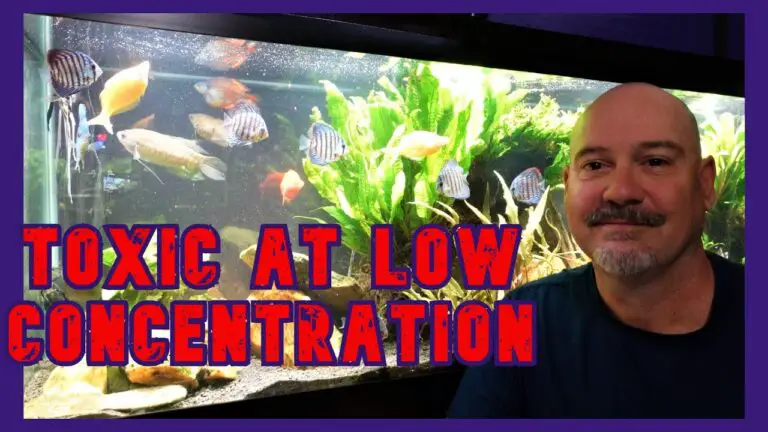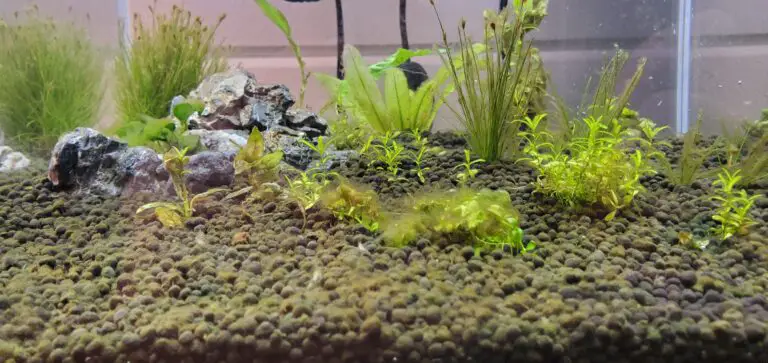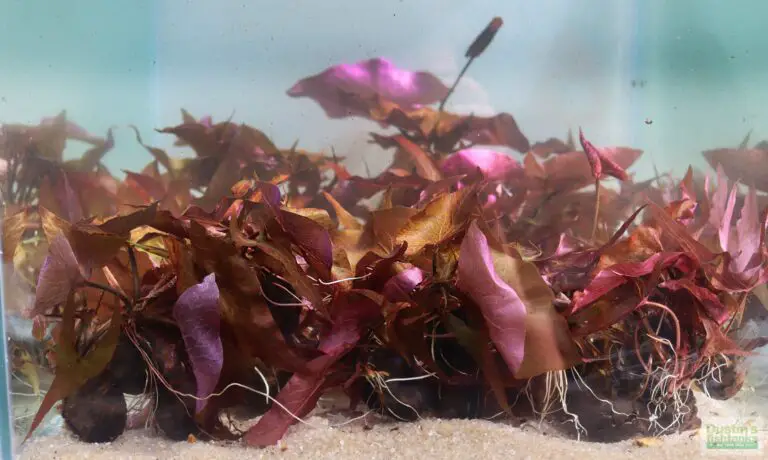How to Get Rid of Biofilm in Aquarium?
Biofilm is a thin, slimy layer of bacteria and other microorganisms that can form on the surfaces of an aquarium. It is usually caused by organic matter or pollutants in the water. To get rid of biofilm, start by doing a partial water change to remove as much organic material as possible from your tank.
Then use mechanical filtration to trap any remaining particles that contribute to biofilm formation.
Finally, you can add products specifically designed to break down biofilms such as enzymes or beneficial bacteria cultures before performing another partial water change and vacuum gravel if necessary.
Additionally, make sure you are maintaining good aquarium care practices like regular testing and cleaning the filter media regularly so that future buildup is minimized.
- Increase Water Flow: Increasing water flow in your aquarium can help to break up and disperse the biofilm, preventing it from forming huge colonies on surfaces
- Use an adjustable powerhead or wavemaker to create a gentle current that will push the particles away and prevent them from sticking together
- Clean Aquarium Decorations: Remove any decorations such as rocks, plants and driftwood from the tank and scrub them with a toothbrush to remove any built-up debris
- Rinse off all of the decorations until they are free of dirt or algae before returning them back into the aquarium
- Remove Biofilm Manually: If you have a small tank, you may be able to physically remove biofilm by hand using an algae scraper or sponge pad designed for use in aquariums
- Start at one end of the tank and work your way around gently scraping off anything that has attached itself onto surfaces within reach of your arm’s length (eg., walls, gravel bed)
- Add Beneficial Bacteria: Adding beneficial bacteria like nitrifying bacteria can help consume organic waste material which can reduce biofilm formation in some cases
- Ensure that you follow dosage instructions when adding these products into your tank as overdoing it could cause more harm than good!
How to Prevent Biofilm in Aquarium?
To prevent biofilm from forming in your aquarium, it is important to keep the water clean and well-oxygenated. Regularly perform water changes and use a filter to remove excess organic waste. Additionally, you can add bacteria supplements to help break down any existing biofilms.
You should also make sure that your aquarium has plenty of live plants or rocks as natural surfaces for beneficial bacteria to grow on. Lastly, avoid using chemical treatments unless absolutely necessary, as these can disrupt the normal balance of your tank’s ecosystem.
Biofilm in Cycling Tank
Cycling tanks are a common feature in many aquariums, and they can become vulnerable to biofilm if not properly managed. Biofilm is a slimy layer of bacteria that forms on the walls of cycling tanks, often caused by inadequate filtration or overfeeding. This biofilm can be detrimental to tank inhabitants as it can block oxygen flow, reduce water clarity, and lead to an increase in harmful ammonia levels.
Proper maintenance such as frequent water changes and adequate filtration are essential for keeping your cycling tank free from biofilm buildup.
What Does Biofilm Look Like in Fish Tank?
Biofilm in a fish tank generally appears as a slimy, grayish-brown film on various surfaces. It is often found on the walls of the aquarium and surrounding decorations such as rocks or plants. The biofilm may also appear cloudy when seen from above and can be difficult to remove with cleaning supplies such as sponges or scrub brushes.
If left untreated, it can lead to reduced oxygen levels in your fish tank, which could cause harm to your aquatic life.
What Causes Biofilm in Aquarium?
Biofilm in an aquarium is caused when bacteria form a slimy layer on the surfaces of objects like rocks, decorations, and tank walls. This slime can be composed of various organic materials such as dead fish tissue or fecal matter from other organisms living in the tank. Additionally, nitrogen compounds like ammonia and nitrates can contribute to biofilm’s formation due to their ability to provide energy for bacteria growth.
The accumulation of these materials leads to an environment where bacteria can thrive, creating colonies that eventually form a slippery surface known as biofilm.
What Eats Biofilm in Aquarium?
Biofilms are an important part of a healthy aquarium, but they can also become too abundant. Fortunately, there are several natural ways to reduce biofilm levels in your tank such as increasing water circulation and adding certain fish species that feed on biofilm like plecos and otocinclus catfish. In addition, shrimp such as Amano Shrimp or Red Cherry Shrimp are excellent at eating away the excess buildup of biofilm.
How to Grow Biofilm in Aquarium?
Aquarists can grow biofilm in their tanks by introducing floating plants, such as duckweed or frogbit. This will create a surface on which the beneficial bacteria and microorganisms that make up the biofilm can attach and thrive. In addition to providing a place for them to live, adding these floating plants also helps increase oxygen levels in the tank, creating an environment well-suited for a healthy population of beneficial bacteria.
Is Biofilm Good Or Bad Aquarium?
Biofilm is essential for the well-being of an aquarium. It helps to oxygenate and cleanse the water, as well as provide a safe environment for beneficial bacteria to thrive. In addition, it acts as a natural biofilter that can help reduce ammonia levels by providing additional surfaces where nitrifying bacteria can colonize and convert harmful toxins into harmless substances.
Generally speaking, having some biofilm in your tank is beneficial; however, if left unchecked or not properly managed, it can cause problems such as blocking filter intakes and pipes or becoming too thick which reduces oxygen levels in the water column.
Biofilm on Wood in Aquarium
Biofilm on wood in an aquarium is a natural process that occurs when beneficial bacteria and other microorganisms form colonies on the surface of submerged pieces of wood. These biofilms provide nutrition for fish, shrimp, and other aquatic life forms by breaking down organic matter into usable nutrients. In addition, biofilms help keep water clean and clear by filtering out waste particles from the water column.
It’s important to note that too much biofilm can negatively affect tank parameters such as pH levels and oxygen concentration; therefore regular maintenance should be done to ensure healthy conditions in the aquarium.

Credit: www.youtube.com
How Long Does It Take to Get Rid of Biofilm in Aquarium?
Biofilm is a common problem in aquariums, and can be difficult to get rid of. Depending on the severity of the biofilm, reducing or eliminating it could take anywhere from a few days to several weeks. The most efficient way to remove biofilm is by performing regular water changes and adding chemical treatments that break down organic matter.
To start, it’s important to make sure you have good filtration; this will help reduce organic waste before it turns into biofilm. Additionally, keep an eye out for any algae growth and use chemical treatments if necessary to keep levels low. If your tank has been overrun with algae or debris builds up quickly despite regular maintenance, you may want to consider replacing your filter media more frequently than usual as well as cleaning off any surfaces inside the tank weekly with an algae scraper tool.
If all else fails, there are also specialized products available specifically designed for treating biological film buildup in aquariums which can help speed up the process of ridding yourself of this pesky problem!
Why Does My Aquarium Have Biofilm?
Biofilm is an essential part of any aquarium, but it can also be a source of confusion for many aquarists. Biofilm exists in nature and is actually necessary for the health of your tank. It’s made up of naturally occurring bacteria, fungi, and other microorganisms that live on surfaces in the water column or substrate.
This helps to process waste from fish, plants and other materials in the aquarium into useful nutrients that are beneficial to the overall ecosystem. By breaking down organic compounds such as ammonia into nitrite and then nitrate. Which can be used by plants as fertilizer. Biofilm helps keep water parameters balanced so that your fish remain healthy. Additionally, its presence serves as a natural form of filtration as it traps debris before it has a chance to settle on surfaces or clog filters where they could cause harm to inhabitants or impede circulation in the tank.
What Does Biofilm Look Like in Aquarium?
Biofilm in an aquarium may not be the most attractive feature of your tank, but it’s actually a sign that your aquarium is healthy. Biofilm looks like a thin layer of slime on surfaces such as rocks and decorations. It can also cover the glass of your tank or appear as small patches on gravel.
In addition to its slimy texture, biofilm usually has a cloudy appearance and tends to range in color from greenish-brown to gray or even white. Though it might look unappealing, biofilms are beneficial for aquariums because they provide safe hiding spots for baby fish and invertebrates while they develop, as well as providing food sources for other creatures living in the tank. The presence of biofilm indicates that there is enough oxygen present near the surface so beneficial bacteria can thrive – something all aquarists should strive towards!
Does Biofilm Mean My Tank is Cycled?
No, biofilm does not mean that your tank is cycled. Biofilm is a slimy substance made up of bacteria and other micro-organisms which can form on the surfaces of fish tanks or aquariums. While it’s often considered unsightly, many aquarists actually find it beneficial as the growth of this film provides an area for beneficial bacteria to colonize and thrive.
However, it should be noted that having biofilm in your tank does not necessarily indicate that your tank is cycled; cycling refers to the process by which beneficial bacteria are established within an aquarium so that ammonia and nitrite levels remain safe for aquatic life. To properly cycle a tank you will need to test water parameters regularly until there are no more detectable traces of these toxins present.
Additionally, if you plan on adding new inhabitants to a newly set-up tank you’ll want to ensure there’s enough bacterial colonies present already before doing so in order to avoid any potential issues from occurring due to poor water quality caused by lack of proper cycling procedures being followed first.
No skimmer? Remove biofilm, surface film, scum with quick and easy methods!
Conclusion
Overall, biofilm can be a major problem in aquariums. However, with the right equipment and knowledge, it can easily be managed and eliminated. With regular maintenance and routine water changes, you should have no trouble keeping biofilm out of your aquarium.
Additionally, using mechanical filtration systems and beneficial bacteria to keep the tank clean is an effective way to prevent future problems related to biofilm growth. If followed correctly, these steps should help ensure that your fish stay healthy for years to come!





